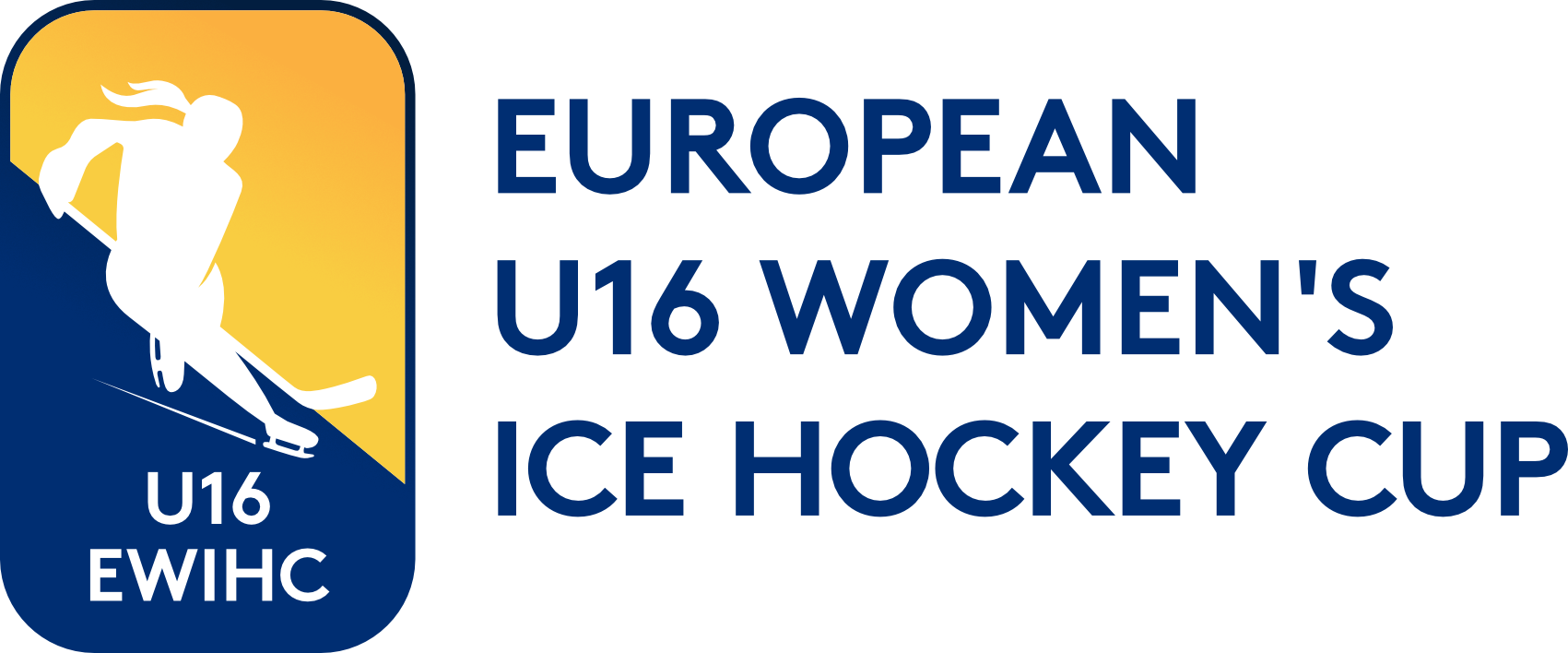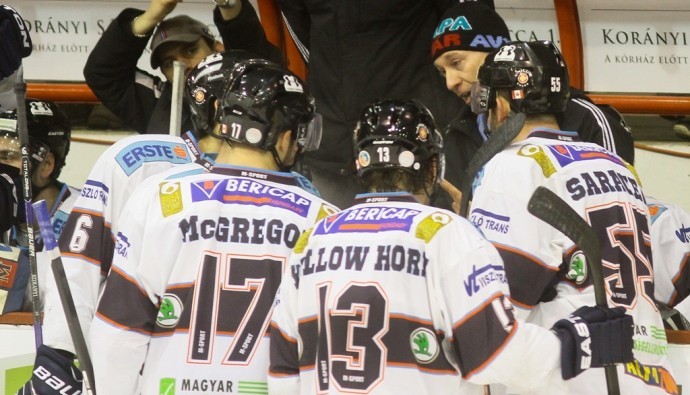
An important piece to any championship team in European hockey is having quality imports on the roster. An import signing can really make or break your season, and a late season pick up, much like a move at the trading deadline in the NHL might give you an extra push for a deep playoff run.
An import player can be a lightning quick forward that has a scoring touch that makes the big play late in a tight game, they could be a veteran defenseman that is a leader in the locker room and who young domestic players can turn to for advice, or they are the shut down goalie between the pipes.
“It is very important how the imports turn out that a team has signed, it will influence the entire season for a team. if the club has six quality imports and are leaders both on and off the ice, that team can accomplish anything. If you have imports that don’t really help or a mid level guy I say a team should give a roster spot to a young Hungarian.” says Szabolcs Fodor, color commentator and in studio expert for M4 TV. What Fodor is saying is that if the player that the team has brought in is not a leader or one of your top players you can save the money and also develop future talent by giving the roster spot to a Hungarian.
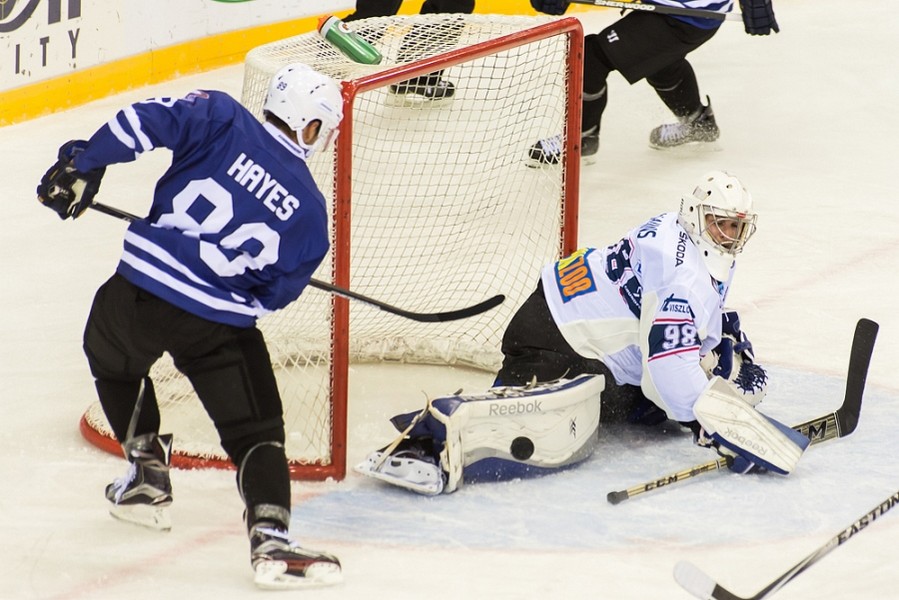
The next season starts right after the last game.
The following season starts for players when preseason conditions starts, for fans it's when the puck drops on opening night, for coaches and general managers it starts the day after the previous season ended. “You first look at who would you like to have back and others that you don't want to return, you identify players that you want but of course a lot of them want to wait to see what other options they have” says former Rosenheim and Krefeld Head coach Gary Clark.
You have to look at what you have and what you need to fill out the rest of your line up. MAC Budapest head coach Gergely Majoross already had an actually team when he took over at Miskolc before last season however this offseason was very similar despite being with a new team that had no players when the offseason started. “It is easier when you have a core group of players and you know what type of players you need both characteristically and from the hockey side as well. I did this last year in Miskolc with the players that were already there and this season with MAC after the team had signed their Hungarian players. I have criteria according to what I’m looking for in a player, what they need to know and they have to be able to do, and what is something extra that I might need.”
In Fehérvár the situation is somewhat different, not only does Tyler Dietrich have to see what players can come up from the U20 team but also who might be called up to the EBEL team. Injuries to the EBEL squad have kept a couple of young guns permanently with the EBEL team. “I sketched out a depth chart and tried to envision where guys would slot in to the EBEL team and MOL team. While it wasn't for sure that guys like Tamás Sarpatki or Péter Vincze would be staples on the EBEL team, we had a pretty clear idea of how many capable MOL players we would be working with. Then it was a matter of deciding what type of players would be fit the big picture.”
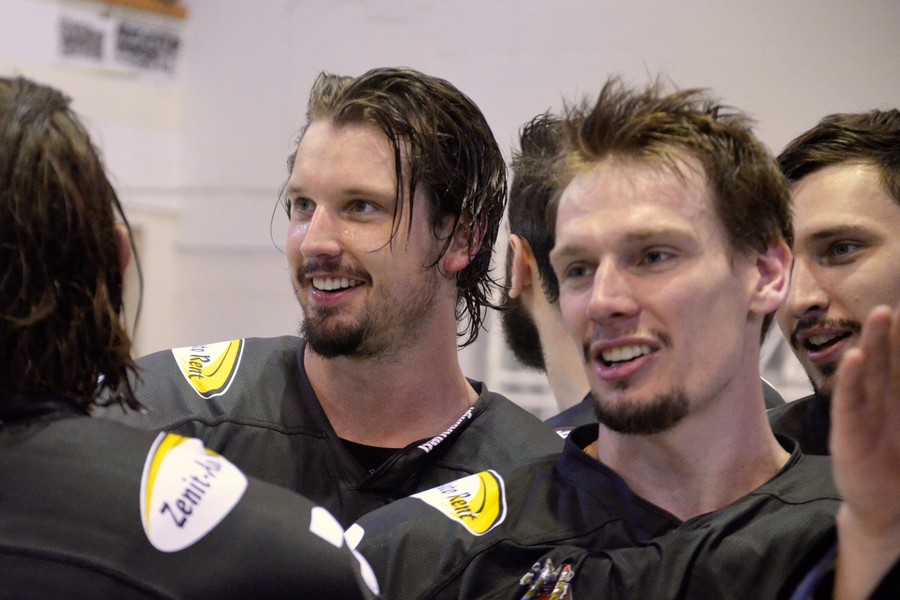
Character can make or break the deal
You can have the softest hands or a rocket of a shot but if you are a locker room cancer there is a little chance that you will be playing for any of the teams in Hungary. It was unanimous by everyone interviewed that a player's character was just as important when they brought in a player. Clark has a great example of when he was the coach of the Starbulls in the DEL of a player that on paper looked good. “Brian McReynolds could have been a second line center, was kind of rugged did everything pretty well, he had played the season before in Germany and some guys on the team knew him, he had been a captain on teams in the past. However his personality did not fit, he was more negative in the locker room than positive and I had to get rid of him. You don’t know a player really until you coach them.” As usually there are also positive examples as well of players who at first look like they might be a total bust but could turn out to be the type of locker room player that every team needs. Fodor has an example of this from his last season of pro hockey when he played in Miskolc “Justin Smith was a guy who was not the most talented player on the ice but he battled hard and left everything on the ice, and was great for the team and was a great team player in the locker room as well. It was easy to see why he wore an A on his jersey in college”
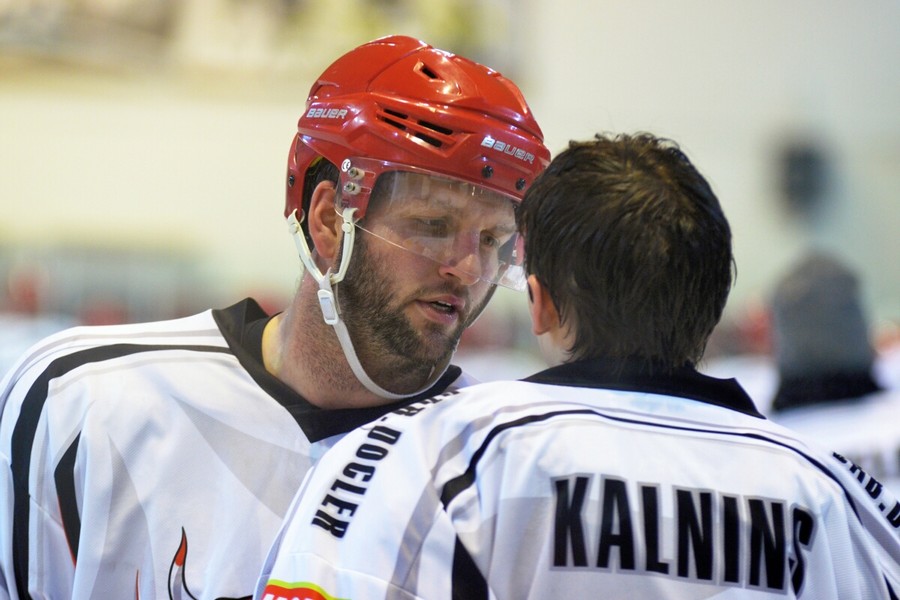
Where to find players
“The names came from various avenues, some players contacted me themselves, some agents sent their client lists, some former teammates referred guys, and I did a lot of clicking around different league websites. From that list I made a lot of phone calls and got opinions from coaches, GMs, former teammates, etc. and identified the guys I thought would be the right pieces for our team.” says Dietrich who is in his first year as a senior head coach. Majoross who doesn’t have much more experience as he is in his second season goes through similar channels, “ Last year much like this year the list of hundreds of players were cut down to about 25 players who I started to talk to and also talk to former teammates and coaches of there's. We need to find out what kind of person they are, this actually isn’t that hard as most North American coaches are very helpful. If I don’t have contact through a former teammate or coach I would turn to one of the forms of social media to get in contact with a coach or GM to get the information that I need on a particular player.” Unlike Dietrich and Majoross, UTE coach Zoltán Szilassy has worked with three out of his imports Peter Huba, Jozef Mihálik and Victor Lindgren, in the past when he was an assistant in Dunaújváros. “I had know Jozef from Dunaújváros and through him we were able to bring in (Miroslav) Durak. I had seen Teemu (Elomo) play in Fehérvár so I was familiar with what he can do. We were bring in players to a team that only had 6 points the previous season. (Reines) Demiters wasn’t a bad player either but we had to let him go because of personal reasons, we probably knew the least about him, but he was so inexpensive that he was worth the risk. I had worked with Peter Huba in the past, I knew what his work morale is like, last season when the first time we played Nové Zámky he said if he would have known that I am the new coach in UTE he would have signed with us. Lindgren came to us after his season wasn't going well in Denmark and we had worked together in DAB as well.”

You have to work your contacts
All these young up and coming coaches, Dietrich, Szilassy and Majoross who up until this season had two years of head coaching experience between them selves have been lucky enough to have been around coaches and people that are willing to help. “ I try to find out the most about players personalities both on and off the ice from the foreign coaches that I have worked with such as Stephan (Lundh), Rich (Chernomaz), and Glen (Williamson),” says Szialssy “I am in constant contact with others such as (Dr. Viktor) Szélig and anyone else that might have any connections, and of course their hockey knowledge.” Majoross was also in contact with Szélig, who is the sports director for Briancon as Ian McDonald spent last season with the French team before signing with MAC this offseason.
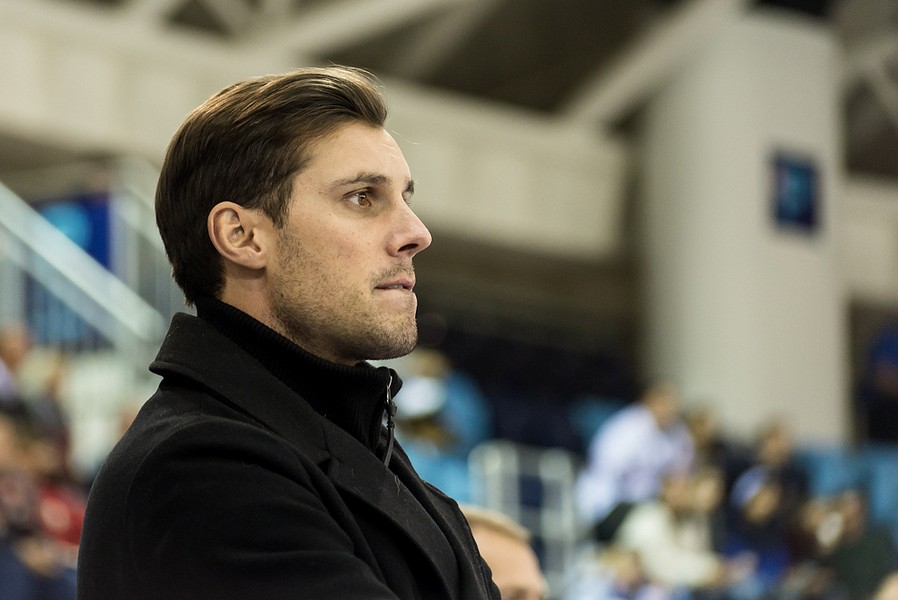
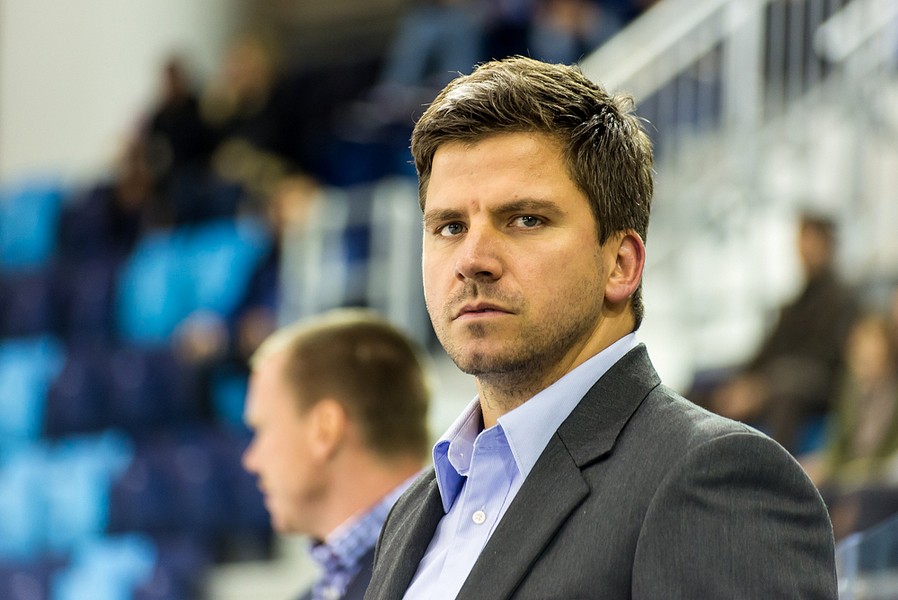
The end result
In the end you want to win and the import players should be the ones that give you the extra push to become a better team, but everyone has to be honest and know that there is a reason why an import player is playing in the MOL League and not the Liiga, Eliteserien or the NHL. “This year there was a player that I didn’t get completely positive feed back on which I like since that means they were being honest, but with this player I thought that I could work with him in his weakness. We have to be honest if a player was perfect they would not be in the MOL League. If they came to the league most of the teams in the MOL league could not be able to afford him. Jeff Hayes for example he has the hands and the skating that would easily make him a DEL level player, but he is only 170 cm.” Majoross continues with an example of a player who did not look the part but was a great import pickup “There was a player by the name of Pierre Dagenias in Innsbruck during the 2007-08 season when we saw the team warming up there was a player that looked like he could barely skate and looked as if he should not be on the team and he was one of the team's import players. Something didn’t add up, when they announced the lineups and he was referred to as “The Snipper”, they had two power play chances and on both of them Dagenias shot out the top corner from the top of the faceoff circle for two goals.” (He played 142 games in the NHL).
Majoross nicely explained his philosophy on how to handle imports and what he thinks could lead to getting everything out of these players. “It is a misunderstanding that people think that the work is done once the import signs the contract, they will play in all in one line or split them in two lines the team has one or two good lines. since the MOL league is not the best league and teams are financially handcuffed, import players for whatever reason are “damaged goods”, they could be coming off of an injury, maybe they had a couple bad seasons but for some reason they, they could be a step slow, too short, whatever it is they are not playing in a better league. My stance is that you have 20+ players on your team and you have to work with all of them to make them better, they have to know what you want from them. These players are coming to the unknown and there could be outside forces that are also involved which they might not think of.”

